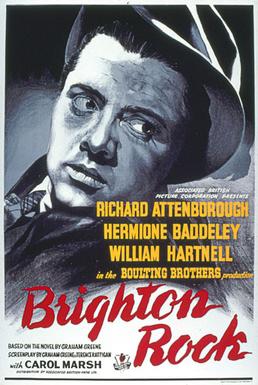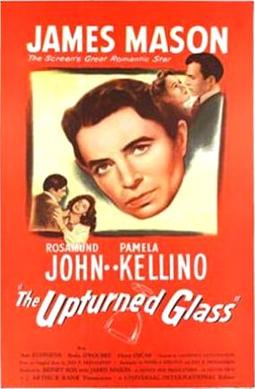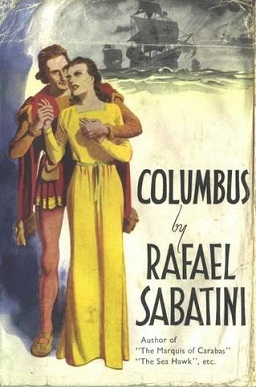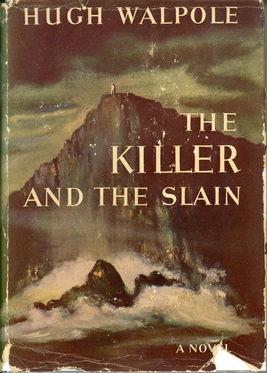
Easy Money is a 1948 British satirical film about a modern British tradition, the football pools. It is composed of four tales about the effect a major win has in four different situations in the post-war period. Written by Muriel and Sydney Box, based on the play "Easy Money" written by Arnold Ridley, and directed by Bernard Knowles, it was released by Gainsborough Pictures.

Brighton Rock is a 1948 British gangster film noir directed by John Boulting and starring Richard Attenborough as violent gang leader Pinkie Brown, Rose Brown as the innocent girl he marries, and Ida Arnold as an amateur sleuth investigating a murder he committed.
Jay Gardner Lewis was a film director, a film producer and writer born in Warwickshire, England. In 1940, he founded the documentary film company Verity Films with Sydney Box.

Christopher Columbus is a 1949 British biographical film starring Fredric March as Christopher Columbus and Florence Eldridge as Queen Isabella. It is loosely based on the 1941 novel Columbus by Rafael Sabatini with much of the screenplay rewritten by Sydney and Muriel Box.

Jassy is a 1947 British colour film historical melodrama set in the early 19th century, based on a novel by Norah Lofts. It is a Gainsborough melodrama, the only one to be made in Technicolor. It was the last "official" Gainsborough melodrama.

The Brothers is a British film melodrama of 1947, starring Patricia Roc, Will Fyffe and Maxwell Reed, from a novel of the same name by L. A. G. Strong.

When the Bough Breaks is a 1947 film directed by Lawrence Huntington and starring Patricia Roc and Rosamund John. It is an adaptation of an original storyline by Herbert Victor on adoption and the competing ties of one child's birth and foster family.
The Gainsborough melodramas were a sequence of films produced by the British film studio Gainsborough Pictures between 1943 and 1947 which conformed to a melodramatic style. The melodramas were not a film series but an unrelated sequence of films which had similar themes that were usually developed by the same film crew and frequently recurring actors who played similar characters in each. They were mostly based on popular books by female novelists and they encompassed costume dramas, such as The Man in Grey (1943) and The Wicked Lady (1945), and modern-dress dramas, such as Love Story (1944) and They Were Sisters (1945). The popularity of the films with audiences peaked mid-1940s when cinema audiences consisted primarily of women. The influence of the films led to other British producers releasing similarly themed works, such as The Seventh Veil (1945), Pink String and Sealing Wax (1945), Hungry Hill (1947), The White Unicorn (1947), Idol of Paris (1948), and The Reluctant Widow (1950) and often with the talent that made Gainsborough melodramas successful.

The Man Within is a 1947 British, Technicolor, adventure, crime, drama film, directed by Bernard Knowles and starring Ronald Shiner as Cockney Harry, Michael Redgrave, Jean Kent, Joan Greenwood and Richard Attenborough. In the United States, it was released in a slightly shorter version, retitled The Smugglers. It was produced by Triton Films and Production Film Service. The film was also presented by J. Arthur Rank and the Rank Organisation. The film was adapted from the 1929 novel The Man Within by Graham Greene.

The Bad Lord Byron is a 1949 British historical drama film about the life of Lord Byron. It was directed by David MacDonald and starred Dennis Price as Byron with Mai Zetterling, Linden Travers and Joan Greenwood.

Street Corner is a 1953 British drama film. It was written by Muriel and Sydney Box and directed by Muriel. It was marketed as Both Sides of the Law in the United States. While it is not quite a documentary, the film depicts the daily routine of women in the police force from three different angles. It was conceived as a female version of the 1950 film The Blue Lamp.

Floods of Fear is a 1958 British thriller film directed by Charles Crichton and starring Howard Keel, Anne Heywood and Harry H. Corbett.

The Upturned Glass is a 1947 British film noir psychological thriller directed by Lawrence Huntington and starring James Mason, Rosamund John and Pamela Kellino. The screenplay concerns a leading brain surgeon who murders a woman he believes to be responsible for the death of the woman he loved.

The Calendar is a black and white 1948 British drama film directed by Arthur Crabtree and starring Greta Gynt, John McCallum, Raymond Lovell and Leslie Dwyer. It is based on the 1929 play The Calendar and subsequent novel by Edgar Wallace. A previous version had been released in 1931.

Daybreak is a 1948 drama by Riverside Studios – classified by some as 'British Noir' – directed by Compton Bennett and starring Eric Portman, Ann Todd and Maxwell Reed. It is based on a play by Monckton Hoffe.

The Passionate Stranger is a 1957 British drama film, directed by Muriel Box and starring Margaret Leighton and Ralph Richardson. It uses the film within a film device, with the "real" part of the plot shot in black-and-white and the "fictional" element in colour. The interior scenes were shot at Shepperton Studios, with location filming taking place at Chilworth, Surrey.

Columbus is a romantic adventure novel by the British writer Rafael Sabatini which was first published in 1941. It depicts the life of Christopher Columbus at the Spanish court, his voyages across the Atlantic Ocean in which he discovered the Americas and his relationship with the mother of his second son Beatriz Enríquez de Arana, whom he never married.

A Boy, a Girl and a Bike is a 1949 British romantic comedy film directed by Ralph Smart and starring John McCallum, Honor Blackman and Patrick Holt. The film's art direction was by George Provis. The film concerns the romantic escapades and adventures of a Yorkshire cycling club.
London Independent Producers was a British film production company. It was founded in 1951 by Sydney Box and William MacQuitty. Box had recently been head of production of Gainsborough Pictures, part of the Rank Organisation. After Gainsborough was closed down Box left Rank and chose to produce independently. Box's wife, the director Muriel Box, acted as a third partner.

The Killer and the Slain is a 1942 novel by the British writer Hugh Walpole, published posthumously following his death the previous year. It recounts in first person narrative the story of a murderer who gradually turns into the man he has killed both morally and physically.
















